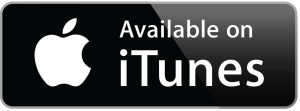Mike Michalowicz's Blog, page 75
February 3, 2016
The Sun Is Always Shining Above The Clouds
I was flying out of Newark Airport. The weather was miserable. It was wet and cold. The ground had puddles and the grass was covered in mud. The clouds were dark.
As the flight took off, the plane shuddered like it too was chilled to the bone.
A few moments later it burst through the clouds. The sun was beaming brightly. The clouds were a beautiful puffy white. The sunlight warmed the passengers through the windows.
I think the darkest days of our entrepreneurial life are the same way – dark, cold, makes you shudder. Almost unbearable.
There is no promise that you’ll break through, but I can promise you this: It is much closer than you think. It’s just a little bit above you. You just need to reach a little bit higher.
When you do burst through, things will be brighter than you ever imagined.
Keep striving, entrepreneur.
February 2, 2016
The Absolute Source for Every Entrepreneur’s Success
As soon as Donald Trump mentioned it about any of his competitors their pole numbers hit the skids. I’m referring to having low energy.
Being an entrepreneur is more than a full time job. A successful entrepreneur is constantly on the run. Their mind needs to race at 100 miles an hour. In order to do this, you need many sources of energy, from fueling your car, truck or jet. So when Donald Trump said Jeb and Dr. Carson had low energy, he was asking that without adequate energy how could they be effective presidents?
This article is not about politics although the wrong policies can either enhance or challenge the ability of the American entrepreneur to succeed. When I refer to energy I am including fuel and a healthy balance sheet which propels a company forward. Just like a balance sheet has pluses and minuses, energy has positives and negatives. Ultimately your furnace is your health and enables you to harness your company’s resources.
The ongoing cycle that fuels a business is cash flow and profits. The cycle that fuels a CEO is health and enthusiasm. Both of these parallels continue to feed off of each other. Without adequate health and vigor, a CEO can’t fuel success. The ones s/he leads also feel this lacking.
We know all the obvious energy boosters and busters, which are part of various cycles.
Let’s start with eating and exercise. If you eat the proper foods, you have the stamina to exercise and put energy into your business. If you eat the wrong foods, you feel sluggish. This affects everyone around you.
The next cycle is sleep and getting on schedule for the next day. If you get a good night’s sleep and wake up refreshed, you are like a thoroughbred foaming at the bit ready to get out of the starting gate. But if you get a restless night’s sleep the next day won’t be very productive. Everything you do will further drain you, leading to a vicious cycle.
If you eat, sleep and exercise properly, you don’t need to read further. However, if you don’t, the tips below could be a game changer for you, your family, and business.
Below are some of the reasons you don’t sleep well;
1. Poor sleep hygiene. Having good sleep hygiene involves having a steady sleep schedule, keeping the bedroom cool and dark, blocking out digital displays and having a routine before bed, like taking a bath, brushing your teeth, maybe reading a book. Don’t read from anything digital because that re-engages your brain at a time you want to unwind. Adapting these routines may sound easy but for some people, they are very difficult.
2. Eating the wrong foods, especially close to bedtime.
3. Nighttime Acid Reflux.
4. Stuffy sinuses.
5. Some other undiagnosed health issue.
We are going to discuss reason 3 & 4. There is a well-known solution in the medical community but for some reason it doesn’t get much attention when Doctor’s make recommendations to their patients.
Doctors tell almost all-acid reflux sufferers to lift the head of the bed. Studies have shown that this leads to great results. Not only does it help with acid reflux, it can also help with other drainage issues.
But it’s easier said than done. There is a simple device that lifts the head of the bed. It’s called an under mattress bed wedge. It’s also called a mattress wedge or mattress bed wedge.
What this device does is it inclines the entire sleeping area, to a medically recommended angle, to introduce gravity while sleeping. This position helps by keeping someone from refluxing. If someone should happen to experience reflux gravity drains acid back into the stomach as opposed to letting it sit in the esophagus and causing damage all night long.
If you do suffer from Acid Reflux you could find Reflux Guard© at www.refluxguard.com and learn a lot more about the product and acid reflux.
February 1, 2016
Episode 65: Health and Profitability with Bryn Davis




Show Summary
Bryn Davis joins Mike Michalowicz and Chris Curran to share his inspiring story of how his passion for healthy eating exploded into a booming business. Welcome to Episode 64 of the Profit First Podcast!
Our Guest
Bryn wasn’t a chef or restauranteur. He was just a guy looking for a healthier way to eat. So he started where all healthy food starts – on a farm. His grandfather’s farm to be exact. That’s where he earned the start-up money for the first Bryn and Dane’s. He took his savings and started building the dream of serving healthy, fast, and delicious food to the masses.
Bryn Davis understands the challenges faced by healthy eaters because he dealt with them himself. What to eat? Where to eat? And how much? Facing these issues when he was 70lbs overweight, Bryn decided to change his habits and change the fast food industry. He learned how to make food that wasn’t just good for you, but also just plain good. He shed the weight, gained some experience, and now he’s ready to share healthy fast food with the world. That’s how Bryn and Dane’s was born.
Show Links
Website: http://www.brynanddanes.com/
Corporate Partners
Nextiva – VOIP phone providers for small businesses.
Fundera – Single source online funding for entrepreneurs. Also offers an adviser program for CPAs, bookkeepers and business coaches.
TSheets – The #1 customer rated time tracking solution!
Fundbox – the simplest and fastest way to fix your cash flow by advancing payments for your outstanding invoices.
January 27, 2016
Now Was Two Words Ago
Now was two words ago.
Now has actually become four words back now. There it is again.
Now passes so quickly. Don’t wait. Catch it now.
(If you don’t, now becomes then.)
January 26, 2016
Snow.
My friend, Barrett owns a lawn care business. To grow his company he hired a company to do outbound calls as the new season approached. As frustrating as it may feel to get sales calls at home, Barrett gets one new customer for every three hundred outbound calls. The numbers work. Barely.
Then Barrett analyzed the data. Certain days he was able to get one new customer for every seventy five calls. A little more research and he found on those days a snow storm had hit the community he was calling. People were home.
Now Barrett chases snow, so to speak. He calls the homes he is trying to sell services to when he knows they will be there – snow days.
What about you? When are your prospects “home?”
January 25, 2016
Episode 64: Married to Mayhem – Part 2 with Matt Perosi, Jamie Doughty & Krista Michalowicz




Show Summary
Matt Perosi and Jamie Doughty join Mike Michalowicz, Chris Curran, and Krista Michalowicz to dive deeper into the lives of being an entrepreneur, as well as what it’s like to be married to one. Welcome to Episode 64 of the Profit First Podcast!
Our Guests
 Since meeting in 2004 Matthew and Jamie have had their share of up and downs, which you could say is normal for any couple. However, when they met, Matthew was already married… to his business. When starting his first business in 1994, Matthew never expected to be married to anything other than work. On the other hand, Jamie fought to be considered Number 1 in Matt’s life; having to fight his way through Matt’s financial troubles, late nights of work, and competing against the affections of his cat.
Since meeting in 2004 Matthew and Jamie have had their share of up and downs, which you could say is normal for any couple. However, when they met, Matthew was already married… to his business. When starting his first business in 1994, Matthew never expected to be married to anything other than work. On the other hand, Jamie fought to be considered Number 1 in Matt’s life; having to fight his way through Matt’s financial troubles, late nights of work, and competing against the affections of his cat.
Once they set their mind on a goal, each one fiercely strives to achieve it. When Jamie set out to move to France for work and graduate school, Matthew did whatever it took to divorce his old work ethic and business model and transformed it into something, not only more flexible, but more profitable. They continue to support each other’s life goals and decisions, even though it keeps them separated by 4000 miles for half the year. Their personal attitude has always been that love is love, and every couple goes through the same types of relationship ups and downs. They were finally married in 2014 once equal marriage rights were available for same-sex couples and they are proud to share their story because, no matter who you are, being married to an entrepreneur always involves a bit of mayhem.
Jamie is currently working on his doctorate degree at the University of Bordeaux while also working as an English professor and a tour guide. Matthew is an internet marketing consultant and Profit First Professional Coach.
Corporate Partners
Nextiva – VOIP phone providers for small businesses.
Fundera – Single source online funding for entrepreneurs. Also offers an adviser program for CPAs, bookkeepers and business coaches.
TSheets – The #1 customer rated time tracking solution!
Fundbox – the simplest and fastest way to fix your cash flow by advancing payments for your outstanding invoices.
January 21, 2016
Is Being Available All The Time Killing Your Business?
Johann Wolfgang von Goeth, the famous writer and scientist, was quoted as once saying, “We must always change, renew, rejuvenate ourselves; otherwise, we harden.” His philosophy couldn’t be more true, and important, when it comes to running a business.
You know it as part of business 101 – always be there for the customer. You are supposed to always be at their disposal, immediately providing your service to them, and continuously be available. In other words, the world of business has taught you that you should sacrifice everything for the customer. But should you really?
The problem with always being there is that actions do speak louder than words. In short, your exceptional availability doesn’t become an amazing “wow” feature to your customer – instead it becomes an expectation. Think about a local store that stays open late or 24 hours, and you can see how that “wow” factor dissipates.
At first, you were kind of excited that it stayed open late or all night, and you appreciated it. You liked the idea that they were there whenever you needed something during those hours, even if you didn’t think you needed it much. After some time went by, you came to expect they would be open. And if you had run out at 1:00 a.m. to grab some antacid, you would have been really ticked off if their doors were locked.
That’s what happens when we make ourselves always available. Within a short period of doing so, when you are not answering the phone on Sunday night, all of a sudden your customer is annoyed and feels you let them down! They came to expect that you would be there at every turn and at all times.
Being available all the time for your customers may sound great initially. “Always at your service” sounds nice to both the new entrepreneur and the customers. But in reality, it is only a matter of time before it will force you to become a glorified slave to your business. It forces you to live in constant anxiety!
They key to business success is not becoming a slave to the work. Rather, it is taking the time to refresh and recharge. You must take a break, and by doing that, you will end up providing a much greater service to your clients.
Here is how you get started:
1. Step one is to tell your clients you will be on vacation for the next three days (even if you are just going to be sitting at home – after all, taking a break from the constant work is a vacation!).
2. During this time, turn off the phone and e-mail. This means that you need to refrain from texting, checking e-mails, etc. Although you may be whining about this step now, just trust me on this. Do nothing related to work. Just detach!
3. Spend those three days doing something else – anything that doesn’t have to do with your business. Spend it with your family, play a round of golf, hit the beach, or just clean the garage. But don’t sit and think about work!
4. Repeat this process at least every couple of months.
The first time you decide to unplug from your business and unwind, it will be weird. I will not kid you! And although you might think that your business is going to fall apart and that you simply can’t make it through the three days without at least checking your e-mail, you will find that you make it through just fine. By the next time you do it, you will have the hang of it and feel more comfortable.
But along the way, something else happens as well. Your spirit and love for your business will be renewed. And when you get back to work, to your clients you will have an energy for your business and for them that you haven’t felt in a long time. And that is a good thing! Don’t become hardened to your business and the service you offer. Do as Goethe recommended centuries ago and rejuvenate!
January 20, 2016
Purpose Phrase Yes, Mission Statement No
Quick. What is Fedex’s mission statement? It is only five sentences long. Five nauseating sentences long, with words like “superior financial returns for investors” and “customer requirements met with the highest quality manner appropriate.”
How can a company with a mission as lame as that kick so much butt? The reason is not their mission statement, obviously.
It’s the fact that they have a concise, clear, documented, vocalized purpose phrase. Fedex’s purpose statement is “The world on time.” In fact they have a handful of these phrases, and they all revolve around perfect, on-time delivery any where in the world.
Here’s the lesson at hand: I have said it a million times; you need to have a vision for your company. As you grow, you need every employee at your company focused on that vision. And the best way to communicate it with a simple, brief, but powerful purpose phrase.
So, here is your homework for the week. Figure out your purpose phrase. Keep it concise (no more than 5 words), document it and start vocalizing it.
My purpose phrase? “Empowering underdog entrepreneurs!” What’s yours?
January 19, 2016
Rinse & Repeat
Every mother on this planet teaches their child to “Do what you are told.” Marketers are eternally grateful.
Take your shampoo bottle, for example. One of the most powerful marketing “do what you are told messages” of all time was the introduction of the word “repeat” in the shampooing directions. Formally the bottle stated:
1. Lather
2. Rinse
Then a genius marketer remembered what mom taught us and added the third direction. Now the bottle directs you to:
1. Lather
2. Rinse
3. Repeat
Consumption of shampoo doubled.
Alka-Seltzer was running television commercials showing an individual suffering from an upset stomach, dropping a single tablet into a glass of water.
Plop. Fizz.
Herta Herzog-Massing, a famed marketer who influenced the advertising theory of Uses & Gratification (why and how people use media to address their needs), was also a master student of mom’s rule. Herzog-Massing suggested that Alka-Seltzer change the commercials to show an individual dropping two tablets into a glass of water.
Plop. Plop. Fizz. Fizz.
The sales of Alka-Seltzer doubled.
Learn More: Check out the “True Colors” chapter (Pages 76 to 100) of Malcolm Gladwell’s book What The Dog Saw to learn more about Herzog-Massing and similar applications of mom’s lesson.
January 18, 2016
Episode 63: Financing and Profitability with Rev. Dr. K. Bill Dost




Show Summary
Entrepreneur Rev. Dr. K. Bill Dost joins Mike Michalowicz, Chris Curran, and Kristina Bolduc for Episode 63 of the Profit First Podcast! Bill deep dives into the common misconception about business financing and gives us some great tips on how to go about getting funding for your company.
Our Guest

Rev. Dr. K. Bill Dost, an entrepreneur with interests in a variety of fields, got his start in the Asset Finance field over 18 years ago working for Fidelity Leasing. In the year 2000 in Canada he started D&D Leasing to service the entrepreneurial segment of the SME field and expanded into the UK in 2009 when he opened D&D Leasing UK Ltd. He sits on a number of boards including the Finance and Lease Association, Asset Finance Professionals Association and the Toronto Chapter of Entrepreneurs Organization where he was the 2013-2014 President and served on the Canadian Conference Committee. Today he serves on the Canadian Regional Council. A Fellow of the Leasing Foundation, Director for the FLA and AF-PA, he believes it is not enough to simply run a finance company successfully but that one must give back into their community both in their own business and outside of it as well, to that end he not only serves on various committees but also holds an annual charity event to raise awareness and funds for small and often unknown charities. Among other degrees he holds a Doctorate of Theology and an MBA in Human Resource Management.
He is currently pursuing his Chartered Director (C. Dir) designation through The Directors College and in conjunction with DeGroote School of Business at McMaster University. He is a lifelong learner having completed various other programs including an Executive Education program based on Case Study Method at London Business School and Leadership Academy via the Entrepreneurs Organization. His past board experience has includes a nine year period as an Advisory Board Member for Liberty International Church.
Show Links
Website: www.danddleasing.com
Press site: www.danddleasing.com/press
LinkedIn: https://ca.linkedin.com/pub/k-bill-dost/1/476/40a
Twitter: @DandDLeasing
Blog: www.danddleasing.com/blog
Corporate Partners
Nextiva – VOIP phone providers for small businesses.
Fundera – Single source online funding for entrepreneurs. Also offers an adviser program for CPAs, bookkeepers and business coaches.
TSheets – The #1 customer rated time tracking solution!
Fundbox – the simplest and fastest way to fix your cash flow by advancing payments for your outstanding invoices.




